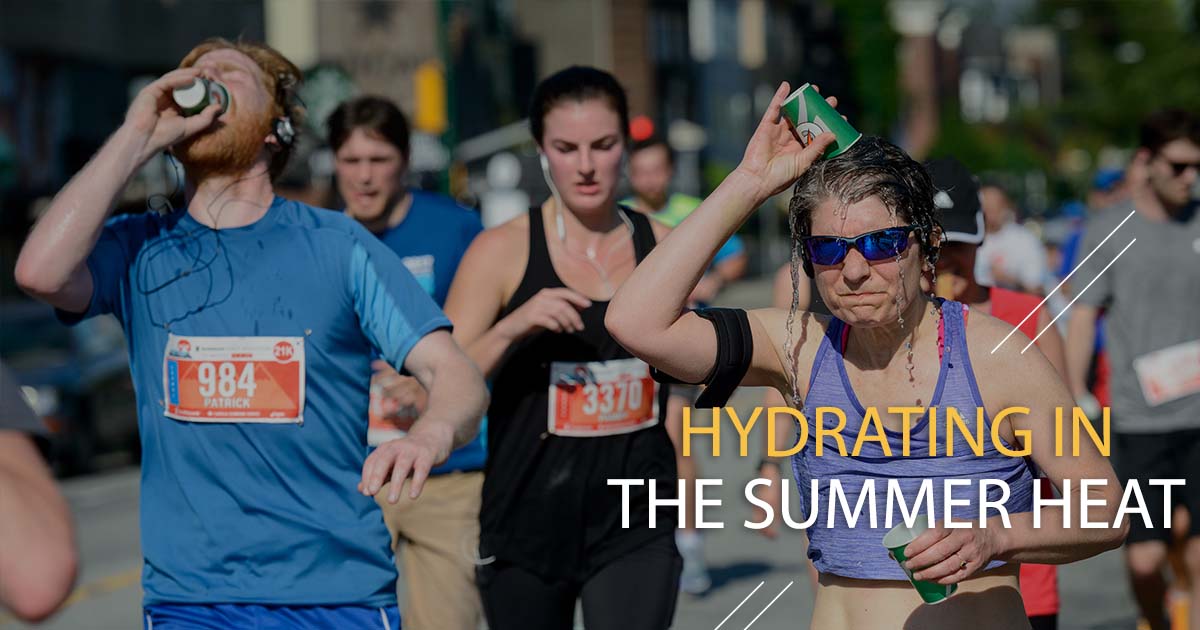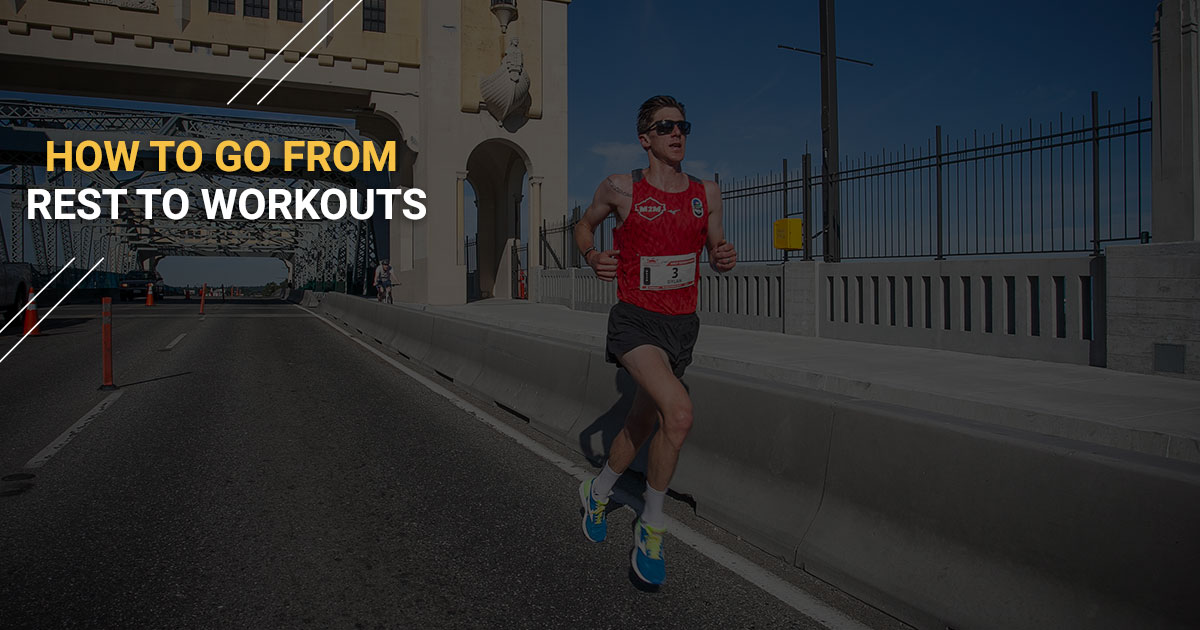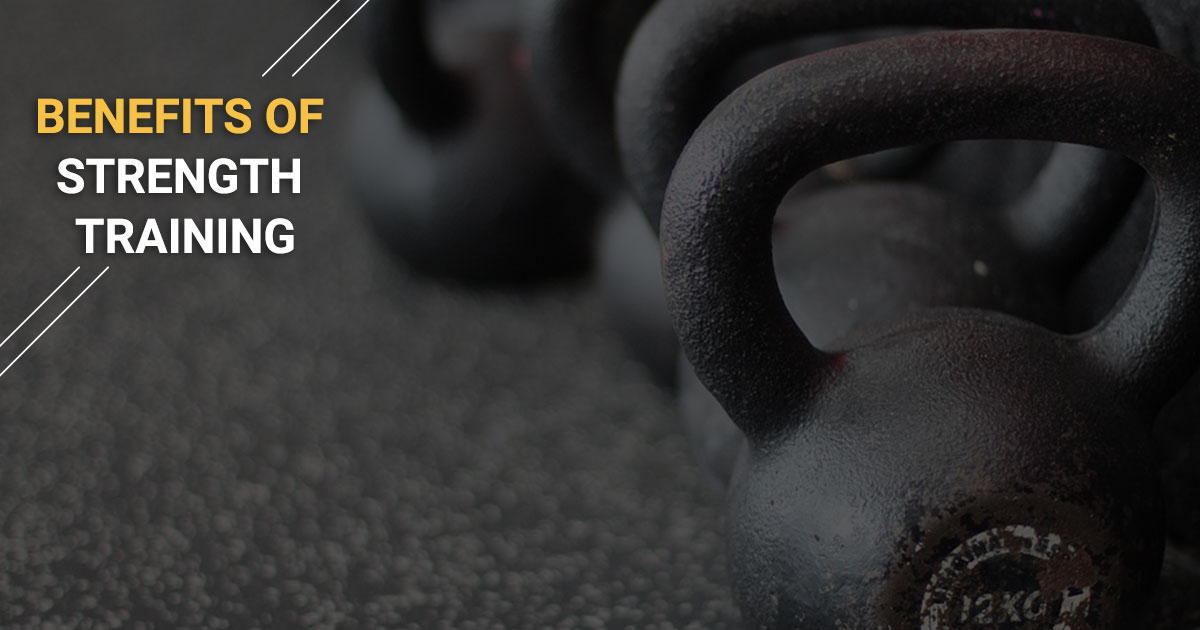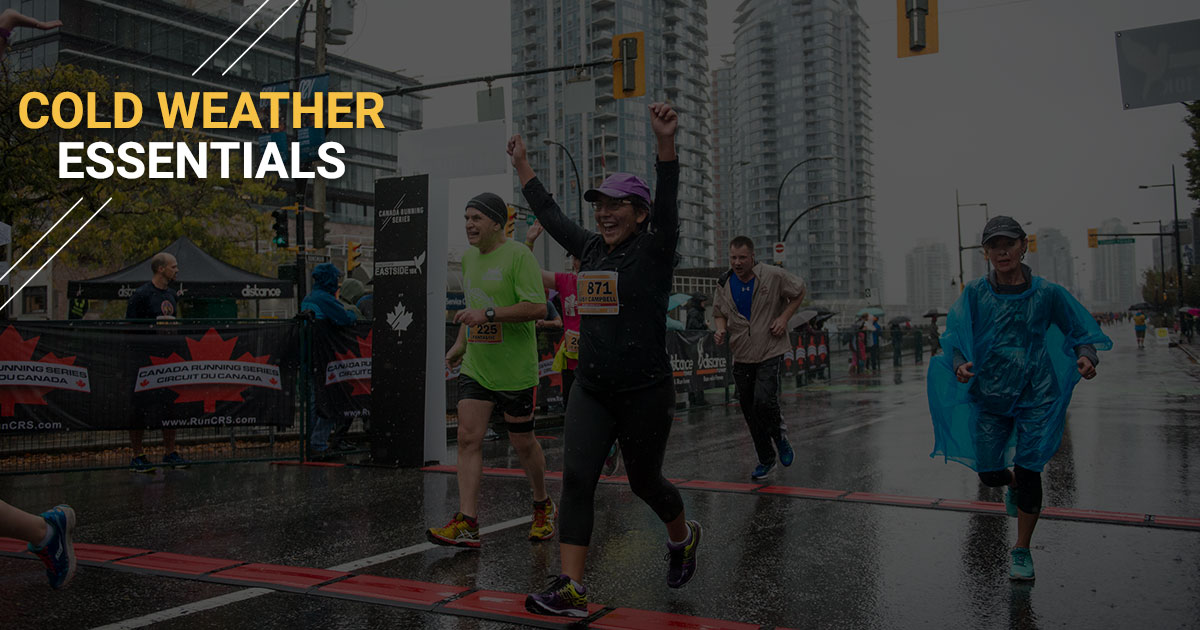
Hydrating becomes especially important in the summer when the temperatures rise. June and July temperatures can be quite variable, while August typically marks the hottest part of summer. A spike in temperatures leaves many of us unacclimatized.

Hydrating becomes especially important in the summer when the temperatures rise. June and July temperatures can be quite variable, while August typically marks the hottest part of summer. A spike in temperatures leaves many of us unacclimatized.

Training in the middle of winter can be cold and miserable, but that doesn’t mean your food needs to be. One of the nice parts of the cold weather is the warmth a hot meal brings to warm a chilled runner from the inside out. Unlike in the summertime, when the thought of having the oven on for prolonged periods of time is unbearable, in the winter it’s welcomed with open arms. Soup, stew, chili, and slow cooker meals, are hearty staples for a winter diets. Another bonus to these soul-soothing meals is that they are filled with nutritious ingredients that are sure to help with recovery and refuelling from a hard session. Here are some tips of how to perfect your winter meals.

Once the holiday season is over, and the nausea from any festive hangover has subsided, the drive to workout tends to come rushing back. Whether it’s because of a New Year’s resolution, or the urge to get back into a routine, it’s important to return to workouts with realistic expectations. But how do you go from laying on the couch, to intense workouts?
Today’s society has instilled a norm of instant gratification. Unfortunately, with running and working out, it’s hard to see results immediately after a workout. Building back into fitness requires time and patience, but that doesn’t mean you can’t push yourself early in a training block. Here are a couple things to keep in mind when jumping back in to workouts.
Taking a break, whether it’s over the holidays, or as a part of a training cycle, requires a check-in before getting back into the swing of things. If the time off has been filled with lying on the couch watching Netflix with no amount of activity, the amount of fitness lost is going to be greater than if there’s been some kind of activity during the break. Be realistic about the break you took, and don’t expect to jump back into training where you left off. A few weeks off won’t decrease your fitness too much, but it will set you back a step of two. Easing back into workouts, doing shorter long runs, and taking additional rest days will reduce the risk of injury when returning to a routine.
If returning from an injury, make sure that it’s pain-free to walk for 30-45 minutes before attempting to run. If the break was scheduled into a training cycle, or occurred because of the chaos the holiday season brings, ease into a run by walking for 5-10 minutes before setting off. Walking helps to warmup muscles, tendons, ligaments, and get joints moving smoothly. Incorporating a good warmup by walking or hopping onto a stationary bike for 5-10 minutes will make the run feel less creaky than if you just started right out the door.
Getting back into running doesn’t mean that cross-training has to stop. Keeping different activities in a training regime until you get back into shape will help build an aerobic base and will stave off injury. Strength training, helps to maintain muscular strength that carries over into running, especially when focusing on fundamental exercises. Core work, glute strengthening, and plyometric exercises don’t require gym equipment and can easily be done in the comfort of your own home. Create a routine that’s efficient and accessible so there’s a higher chance of adhering to the program. Adding in various aerobic exercises will bring cardiovascular fitness back without requiring too much additional impact on the body. Choose cycling, swimming, elliptical, or pool running as great options that can improve fitness and reduce the chance of injury.
If it’s been a while since you’ve pounded the pavement, think about hitting the trails or a rubberized track for some of your runs. The impact of the roads is far more than soft surfaces, and can take a toll on an unconditioned body. Opting for the track allows for flexibility in distance. If you get tired at 5km when you planned for 10km, stepping off the track to hop into your car or on the bus is far easier than having to walk 5km back home on a route that takes you away from your starting point.
It’s hard to not to get caught up in the excitement of getting back into a workout routine, especially if it’s associated with an end goal. However, the body can only handle a certain amount of training everyday, and may require additional rest days at the beginning. Sore muscles are not uncommon when getting back into training, so make sure to take easy days easy, and don’t try to hammer in a workout every time. Rest days, or easy days, give the body time to reap the benefits of the work that’s been done, and allows for positive adaptation. Trying to do too much all at once can result in injury or burn-out, either from getting worn out, or from compensating in workouts due to fatigued / sore muscles. Taking rest days won’t set you back, if scheduled properly, they can enhance your training.
Getting back into training doesn’t need to be rocket science. At the end of the day, if you’re training consistently and putting in the work most days of the week, your fitness will return. That doesn’t mean doing longs runs everyday, or doing anything out of the ordinary. It can be as simple as doing 30 minutes of some kind of activity everyday, whether its running, yoga, strength work etc.

New Years Day is when many people are nursing their hangovers by sitting down with a pen and paper to jot down their New Years resolutions. However, no matter how good one’s intentions are, the enthusiasm for a resolution deteriorates by about February. Unfortunate as this is, it could just be a matter of poor resolution planning. While the goals may vary between individuals, here are some tips for making and keeping your 2018 resolutions.
Focus on one main goal. While there may be other goals that contribute to the success of the main goal, choose one thing that you really want to achieve. Then make it specific. Having a generic goal like “I’m going to get faster” is great, but leaves out a lot of details. How much faster? Over what distance? By when? Have a goal that is SMART: specific, measureable, achievable, relevant, and time-bound.
It’s a scary thing to tell someone about your goals, but it’s also a beneficial thing to do. Having your family, partner, or close friends know about your goal will help you be successful in achieving it. It also keeps you accountable. If someone else has similar goals, or is looking for a helping hand, working together will increase the likelihood of being successful.
A lot of New Year resolutions are goals that encompass lifestyle changes. These require habits to change, and take more effort and time than people realize. Measure your success but don’t be discouraged if you don’t see any results in the first few weeks. Goals revolving around weight-loss, eating habits, or fitness can take over six weeks to see results. If it’s a goal of doing all the dishes before bed every night, then hopefully the results are immediate! Be patient, and understand that long-lasting changes take time.
There is no way to create more time in a day, but adjusting schedules and becoming better at time management will free up more time. Make your goals a priority, and schedule them into your calendar like you would for any other important appointment. Thirty minutes everyday can be enough to do a quick run, do some core work, prep a meal, or clean up. Spending a little bit of time on a goal everyday is better than an “all-or-nothing” approach.
Nobody is perfect. Understand that it’s likely that a slip-up will happen, and your goals could get off track. However, instead of losing hope and giving up, acknowledge the mistake and create a plan that will decrease the chances of it happening again.
Rewards don’t have to be big, but they can be enough to keep up your motivation levels. Treat yourself to a new pair of technical socks if you hit a benchmark training time; or go grab a latte instead of a black coffee if you’ve hit that month’s weight goal. A reward doesn’t have to be every week, but if that’s the frequency that they need to occur to keep you on track, then do what’s best for you!

We’ve all heard how strength training will give us an edge and enhance our running. However, when push comes to shove, strength work is the first thing out the window in a time crunch. Most runners will instead opt for an easy run, or workout, if they only have an hour or two to train. While workouts like intervals, hill repeats, and tempos are great for functional muscular strength, working on fundamental strength is advantageous for any runner looking for an edge.
What kind of strength training is the most effective? There are many components to a comprehensive strength routine including core strength, flexibility, general strength, and functional strength.
When people see the word ‘core’, they automatically think of abs and six-packs. They’re right to some extent, but there’s more that makes up our core than just abdominal muscles. The core encompasses the muscles that act to stabilize and move our spine. Our core is essential for a variety of things: maintaining posture, especially when fatigued; reduces the stress placed on the lower body which prevents injury and tightness; and a strong core helps generate more speed and power over short distances. Utilize exercises that strengthen the core in a functional manner by doing planks, hip stability work, and dynamic movements, instead of traditional sit-ups.
As a runner, being as flexible as Gumby isn’t an advantage. While there’s a lot of controversy on what the ideal level of flexibility is, the general consensus is that some, but not too much is great. Static stretching is somewhat frowned upon as it’s counter-productive. Dynamic stretching and running drills on the other hand is applauded. Drills accentuate general running form, so it works on flexibility in a functional way.
Compound exercises, such as squats, deadlifts, step-ups, and upper body exercises are great as they’re multi-joint exercises. They work the movements we do on a daily basis, and make us stronger in everyday life. Utilizing weights help to build muscle, and is great for base training in pre-season. During racing season, runners don’t want a huge amount of muscle bulk. Any muscle atrophy that comes from increased mileage, and decreased strength training won’t be as detrimental when you start with a higher muscle bulk.
This encompasses both bodyweight exercises and plyometric exercises. Running requires the athlete to move their body over a specific distance as fast as possible. As there are no external constituents, it’s just bodyweight that needs to be moved. Using bodyweight exercises helps in recovery and maintaining strength during race season. Adding in ballistic movements that are required in plyometric training. These are incredibly helpful to runners as they aim to develop strength and speed by training the neuromuscular and elastic characteristics of our muscles. Therefore, they can generate more power through quicker muscle contractions.
Whatever kind of strength is added into a running program, it’ll be worthwhile. These sessions don’t have to be long. Even 30 minutes 1-2 times a week is enough to have benefits. So, next time you’re about to sit on the couch and have a Netflix binge, do some kind of workout for the first 30 minute episode, and your strength workout for the day will be done!

With the holidays just around the corner, we asked some of the elites that have graced us with their presence on the start line about some of their favourite holiday gift, traditions, and ideas for other runners. We heard from Trevor Hofbauer, Catherine Watkins, Dylan Wykes, Leslie Sexton, and Kate Gustafson.
Trevor Hofbauer: The best Christmas gift I ever received was a Nintendo 64. The N64 is a classic and it logged hundreds of gaming hours. The best running related gift I ever received was a Petzl headlamp. It has 3 settings at 50-lumens, 100, and 150. It gets put to use frequently throughout the winter and periodically in the summer during early morning runs and around the campfire.
Kate Gustafson: Composite hockey stick. As a teenager, this was so epic!
Catherine Watkins: The best gifts for me are experience gifts with a destination or an activity (Escape the Room or a Broadway Show for example). I love the long lasting memories these kind of gifts leave me with.
Dylan Wykes: Goalie pads. When I was 13.
Leslie Sexton: I got a Garmin Forerunner 205 about ten years ago. It was big and bulky and took a while to connect with satellites, but it told me how far I ran and how fast, so I loved it. I upgraded to a 220 a few years ago.
Trevor: The best gift is definitely a headlamp. It’s a multipurpose gift that can be used all year round.
Kate: A gift certificate to a local spa (with a massage included), hands down. This is such a treat.
Catherine: Gift certificates for race entries, babysitting services to look after their children while they race/train, homemade cookies (runners always love a good cookie), or a great running watch.
Dylan: Gloves, headlamp, socks, wind protective undies (if you live east of the Rockies…). All the stuff you never think of, but that is essential, and can’t hurt to have a lot of, especially for winter running. A good running book is great at Christmas too; Once a Runner is the classic.
Leslie: Winter running socks! It may not sound very exciting but a good pair of merino wool socks can cost $20 so it is something a lot of people wouldn’t buy for themselves, making it a practical and thoughtful gift for a runner training through the winter. For guys, a pair of winter running boxers with a windproof material in the front is also an essential winter apparel item, so get one for the runner dude in your life.
Trevor: Spending time with family and friends.
Kate: Hmmm, my dad’s fruit salad on Christmas morning is something I always look forward to. If I’m at home, I love to run on Christmas day with my younger brother on the snowy roads in Northern Ontario, it’s not fast but it’s always fun.
Catherine: My favourite parts of Christmas are the traditions. Going out with the family to get the tree, decorating the tree while drinking hot chocolate and eating Christmas cookies and reminiscing about where the ornaments came from. I also love the food !!
Dylan: Eating & Drinking with friends and family. I also like to getting out for a run on Christmas Day every year. Now it’s with my two little girls! We’ll see how long that tradition lasts…
Leslie: I usually have a pretty quiet Christmas day because I race the Boxing Day 10-miler the following day in Hamilton, Ontario. After that I visit family and refuel with the traditional Christmas turkey dinner. I always bring desserts: homemade brownies and Nanaimo bars.
Some of our favourite places to shop for running gifts:
Looking for gift certificates to local races? They’re currently available for the Scotiabank Vancouver Half-Marathon & 5k as well as the Under Armour Eastside 10k.

When the weather gets colder, meals typically get warmer. People go into hibernation mode in the winter, and crave heartier meals. Suddenly creamy soups, pastas, and stews become far more appetizing than they did in the summer. Unfortunately, some of these meals may make your pants fit a little tighter if you opt for a decadent dish at every chance you get. However, there are so many ways to make healthy and delicious meals that are just as satisfying as their heftier counterparts.
The summer has fresh berries and summer vegetables, whereas the winter is laden with winter squash, apples, pears, cauliflower, potatoes, and other root vegetables that are staples for any winter meal. Plus, they taste exponentially better than they did in the summer as they’re actually in season. They don’t cost a fortune as they’re in abundance, so you can eat well without putting a dent in your wallet.
Salads seem to be deemed a summer meal, but that doesn’t have to be the case. Top off your usual greens with roasted potatoes or yams, toasted nuts, crispy chickpeas, or grilled meat/tofu to enhance the meal. Even adding grains like quinoa, buckwheat, brown rice or barley will up the ante and ensure you’re incorporating healthy whole grains. Finish it off with fresh fruit, or crumbly cheese and you’ll be rethinking your views on winter salads.
Restaurant versions of these options can be loaded with cream, butter, and other delicious, but no-so-healthy ingredients. However, if made at home they can be a healthy and time-saving option for dinner. They usually make lots of leftovers that are fantastic for lunch at work. It’s easy to throw in a lot of vegetables into these meals to not only bulk up the dish, but to increase the nutritional value too.
Some of the classic comfort meals like mac & cheese, fettuccine alfredo, or creamy soups are loaded with heavy cream and butter. There are lots of ways to make healthy versions of these meals with seasonal ingredients that won’t break the bank. Whip up cauli-fredo sauce, instead of the classic alfredo. Or use pureed squash and chicken stock instead of cream in your mac & cheese sauce. There are many ways to create nutritious options. Unsure of how to substitute? Just ask Google and a multitude of options will appear.
When produce is fresh, it’s sweet enough to make dessert without requiring large amounts of sugar. Simple options like baked apple crumble, or sweet potato brownies, are healthier options that incorporate the natural sweetness from fruits and vegetables while adding a nutritious punch.

When training for an “A” race, it’s easy to get used to the hustle and bustle of a structured workout routine. For some, their social life may take a hit when training is at it’s highest. For others there may be some sacrifices in their diet. Whatever the lifestyle changes are, they become a choice, not a sacrifice after a while.
Post-marathon (or any other distance), the post-race blues are not an imaginary thing. It happens to many runners, and may feel like a strange emotion to have after a big accomplishment. Having a good cry, or thorough debriefing time after a race, is healthy. It allows you to feel all of the emotions that come with achieving a goal that may not have surfaced on the day.
Big races and goals require incredible focus and dedication. That’s what makes the culmination of efforts so sweet on race day, or so bitter if it goes sideways. Whatever the result is, accomplishing a big goal can leave people feeling a little lost once it’s all said and done. So what do you do once the race ends? If you’re feeling a little lost, keep these things in mind to help you get back on track.
Your body needs a rest after a big effort not only physically, but mentally and emotionally too. It’s incredibly draining to work so hard for so long, so let all of your systems recover. Physically you might feel good to get back on the training horse after a few days, but your body will need at least week or two to fully recover.
Mentally, you need a break from structured training as it took a lot of mental focus to make it through an entire training block. Emotionally, you’ve challenged yourself to do something outside of your comfort zone. By either trying a new distance, or aiming to set a new personal best, you became vulnerable in doing so and letting those who are nearest and dearest to you what you wanted to do. All those things take energy, and combined can be exhausting. After the race, let all of those elements recover and rebuild for the next thing.
Regimented training is great, and allows for consistency. It’s not until the end of a build, when the race is done, that you realize just how much time all that training took. While recovering and determining what your next challenge will be, enjoy the time away from structure. If you would rather nap instead of running, you can do so without guilt. If you want to hike with friends, or go skiing, or just try something new, now’s the time! Go out, have fun, and spend quality time with the people who supported you on your journey.
After a certain amount of time, most runners become antsy. It’s at that time that you start to scheme and plan the next race for the race calendar. When the fire has ignited again to start back into training, you’ll know it’s the right time. It’s worth taking a few days to ease back into things, and not go too crazy right off the bat. Use the previous race’s experience to devise a plan that will put you in an even better position for the next build. Think about adding in other workouts, or cross-training, or strength/core work. All these elements will add diversity to a program and keep things feeling fresh.
After a few weeks off after a race season, it’s important to remember you won’t be starting off exactly where you left off. Some fitness will be lost, and your strength may have decreased. With that in mind, ease back into training with a few shorter runs to start, then add in some strides after runs, then get into workouts. There’s no sense in hammering out a workout on the first day back as it could result in injury, or in muscle soreness that requires a few days off to alleviate it. Take your time getting back into a routine, add in some cross-training to avoid intense DOMS, and remember to have fun.
Like anything, there are ebbs and flows with training cycles. While it may feel hard to take a break after a great race, it’s necessary. Your body will thank you for the time off, and will be ready to take on whatever is thrown at it next. So, enjoy the down time and you’ll be ready to rock for any subsequent races!

As the days get colder, the need for proper winter attire becomes more essential. On the west coast we’re fortunate to have fairly mild winters compared to the typically snow-ridden eastern compatriots. However, if this year’s winter is anything like last year, we’ll all be pulling out our Yak Traks and coziest winter apparel as some point this season.
Our bodies generally require a longer warmup for workouts when running in colder temperatures. However, they also cool down exponentially faster after workouts. Take this into consideration when dressing for the elements. Starting a run off looking like the Michelin Man may initially feel like a good idea, but when you start to overheat and have to lug all of your kit for your run, it’s not ideal. On the other hand, if you wear too little, you may warm up eventually but you’ll be freezing as soon as you stop moving. So here are some things to keep in mind:
Ideally have a thin, moisture wicking shirt against your skin. Top that with a light-weight jacket or vest depending on the temperatures. Keeping your core warm is crucial, so when it’s really cold out, opting for a vest and jacket isn’t a bad option.
Whether they’re half tights, or full tights, wearing an extra layer on your legs will help keep the muscles warm while they work. Cold muscles put you at risk of injury as they won’t be able to warmup enough to feel fluid in their movements. Wearing a pair of tights, or looser fitting pants for more bashful folks, will keep your body heat from escaping too fast and will consequently keep your legs warmer.
Most of our body heat is lost through our heads. Some people find hats too warm even on the coldest of days, so will opt for headbands/ear warmers instead. Both options will keep your ears, and head warm.
Even in above freezing temperatures, it’s wise to wear a thin pair of gloves. Depending on the weather, thin, wind-resistant gloves are great in above freezing temperatures, whereas heavier water-proof mitts are ideal for below freezing chills. Frozen hands are incredibly uncomfortable, and make it difficult to do anything after your run. Have a pair of gloves on hand to avoid battling with your keys to turn on your car, or fighting to change into warm clothes.
The duration of your run will help determine the need for waterproof shoes. If you plan on being out for a long run, it might be worth wearing waterproof shoes that will delay any discomfort that occurs from cold and wet feet. If you’re out for a short run, wet feet won’t matter as much if you’re heading straight home. Just make sure to stuff your shoes with newspaper, and place them by a heater in order to dry faster.
If snow has fallen, and it’s still bright out, protect your skin and eyes. The sun’s harmful UV rays can still pass through clouds. In addition to hitting your skin, the reflection from snow can make the intensity that much stronger. Use sunscreen on bright days, and use sunglasses to protect your eyes.
It’ll take a few runs to figure out how hot you run, or how cold you stay while outside training. Just remember that as long as the footing is okay, and you’ve dressed properly, any weather is runnable!

Running can be unreasonably uncomfortable without proper sports bra fitting. Without the proper support, sensitive breast tissue can tear and cause irreversible damage. The materials in a sports bra will wear out with use, just like with a pair of shoes. When your bra celebrates a birthday, it might be time to retire it to low impact activities.
Good breast health requires proper support for your unique size and shape. What works for Mary in a size 34B will surely be a disaster for Ellie who wears a 40DD. Here are some quick tips and considerations for your next sports bra!
Both bra tops and shelf bras are designed for low impact activity. A bra top is a basic shelf bra that is sewn into a tank. Although sizing varies from extra small to extra-large, they will not provide maximum support for a cup size larger than B.
Support and shape bras are designed for medium to high impact. A wide range of supportive features includes; thicker straps, underwire, adjustable clasps, and racer back design. These types of bras range from A to DD, and sometimes E.
Compression Bras are designed to firmly hold the breasts against the body and are ideal for high impact activities.
Some bras with full encapsulation and compression have underwire and are higher cut in the neckline to provide maximum support. These types of bras are best suited for women with cup sizes larger than a B.
Thanks to Rackets & Runners for this valuable information. Be sure to visit them if you have any questions or need help with proper fitting.